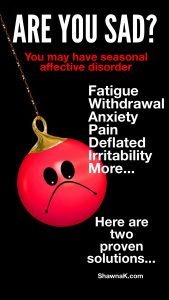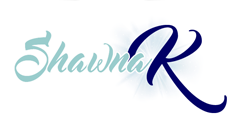 Most people lament the end of summer time to a certain extent, but about 2% of people suffer from S.A.D. or ‘seasonal affective disorder’. This is a kind of depression that worsens with limited exposure to daylight in late fall and winter and disappears when spring begins.
Most people lament the end of summer time to a certain extent, but about 2% of people suffer from S.A.D. or ‘seasonal affective disorder’. This is a kind of depression that worsens with limited exposure to daylight in late fall and winter and disappears when spring begins.
As it turns out, we are biological creatures. Evolution has had a hand in creating our sleep-wake cycle and biological clock. Basically, before artificial lights were part of our every day life, our body adapted such that our internal biological clock synchronized with the light-dark cycle so that we are alert in the day and sleepy as the sun begins to set.
Complicated pathways in our nervous system developed so that specific hormones are released dependent upon light exposure. Melatonin is one such hormone.
Melatonin is also related to regulating body temperature. As we get ready to sleep, our body temperature tends to drop. When daylight exposure is limited, melatonin production is affected and this can lead to a lowered body temperature even during daylight hours triggering sleepiness.
Confession: I’ve come to realize that this is something that affects me when temperatures plummet and I don’t get outdoors as much as I usually do.
If you get into a bit of a winter funk, this might be something that you suffer from as well.
Here are some signs and symptoms of SAD…
- Fatigue – This can be physical or mental fatigue. You may feel like you’re dragging and have no energy.
- Withdrawal – Maybe you don’t find enjoyment from the usual things and withdraw from your usual favorite activities.
- Lack of focus – Concentration and focus is more difficult. Simple decisions are unusually challenging and memory is lacking.
- Sleep difficulties – This can swing from insomnia (inability to sleep) to hypersomnia (the need to sleep all the time). You may wake up frequently and not feel rested even if you get 8 hours of sleep.
- Deflated feeling – Even a light-hearted person might feel overwhelmed with ‘the blues’. This might even include feelings of self-loathing, worthlessness, hopelessness, and an all-around miserable outlook on life.
- Joint and muscle pain – For no apparent reason you may experience dull aches and pains throughout your body.
- Irritability – Feelings can range from anger to tears to just feeling agitated and restless for no apparent reason or solution.
- Appetite changes – You may experience NO appetite or the need to constantly eat. This can cause weight to fluctuate.
- Anxiety – This can range from a mild restlessness to a severe from of stress and inability to cope without professional help.
- Recklessness – In some people, SAD can surface as risky behavior as a form of escape and can result in things like compulsive sexual behavior, gambling, substance abuse, or thrill seeking.
SAD symptoms can be mild or severe. The good news is that there are a few things that you can do to offset them.
Increasing your exposure to light during the winter months and ensuring that you are spending enough time outdoors can have a dramatic impact on your SAD.
Bright light therapy is the most established treatment for SAD. It consists of looking at special broad spectrum bright lights from 1/2 to three hours a day, generally in the early morning hours. The timing and length of the exposure per day are highly individual.
Regular exercise will help tremendously as well.
Support is essential. Let’s get the conversation going to see if we’d be a good fit to work together.
Exercise combined with light therapy can help you fight back against Seasonal Affective Disorder so you can start enjoying the winter season.
*If these things don’t make a difference in your depression, it’s important to seek a different kind of help – possibly seeing a professional is in order.




